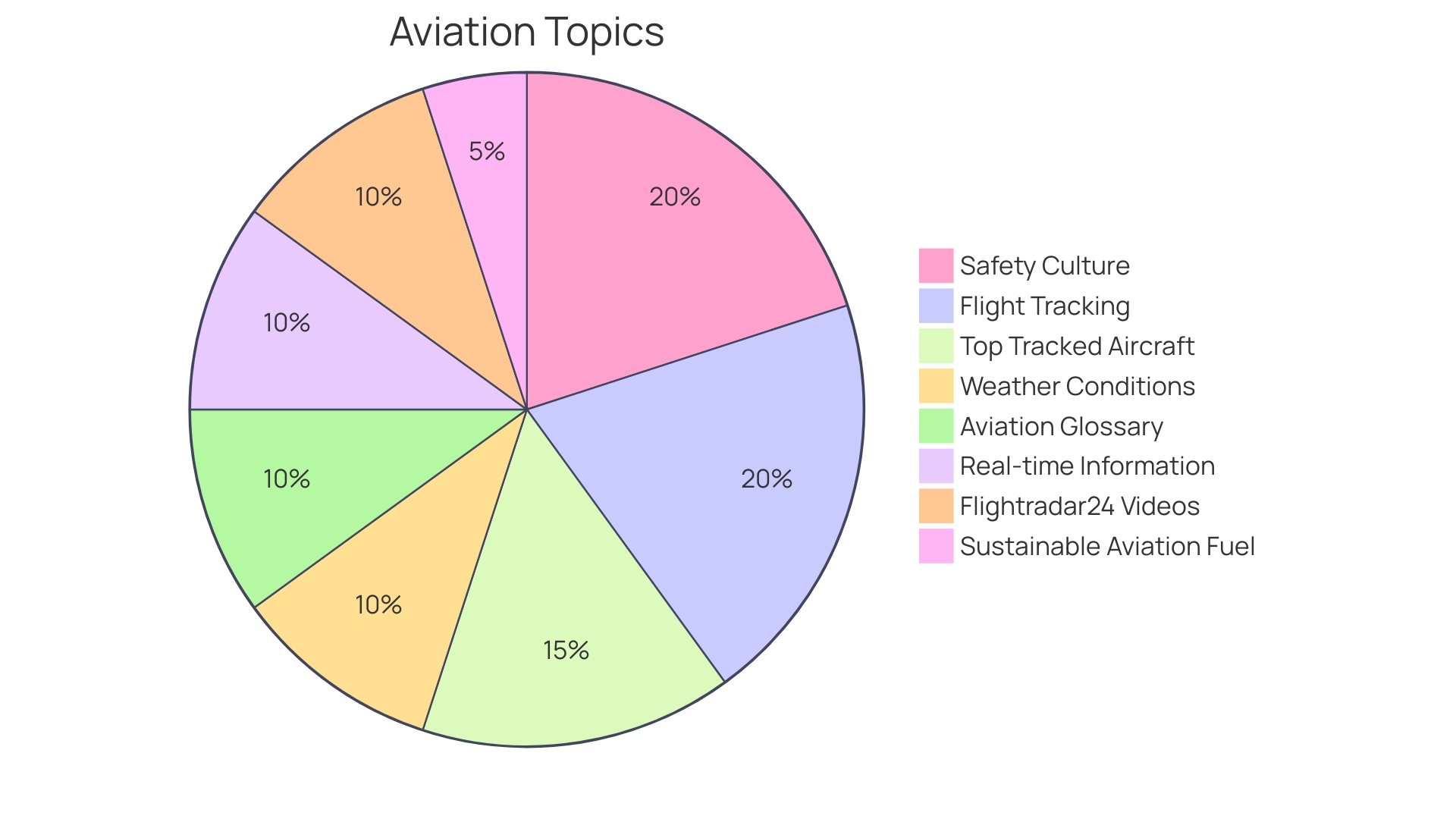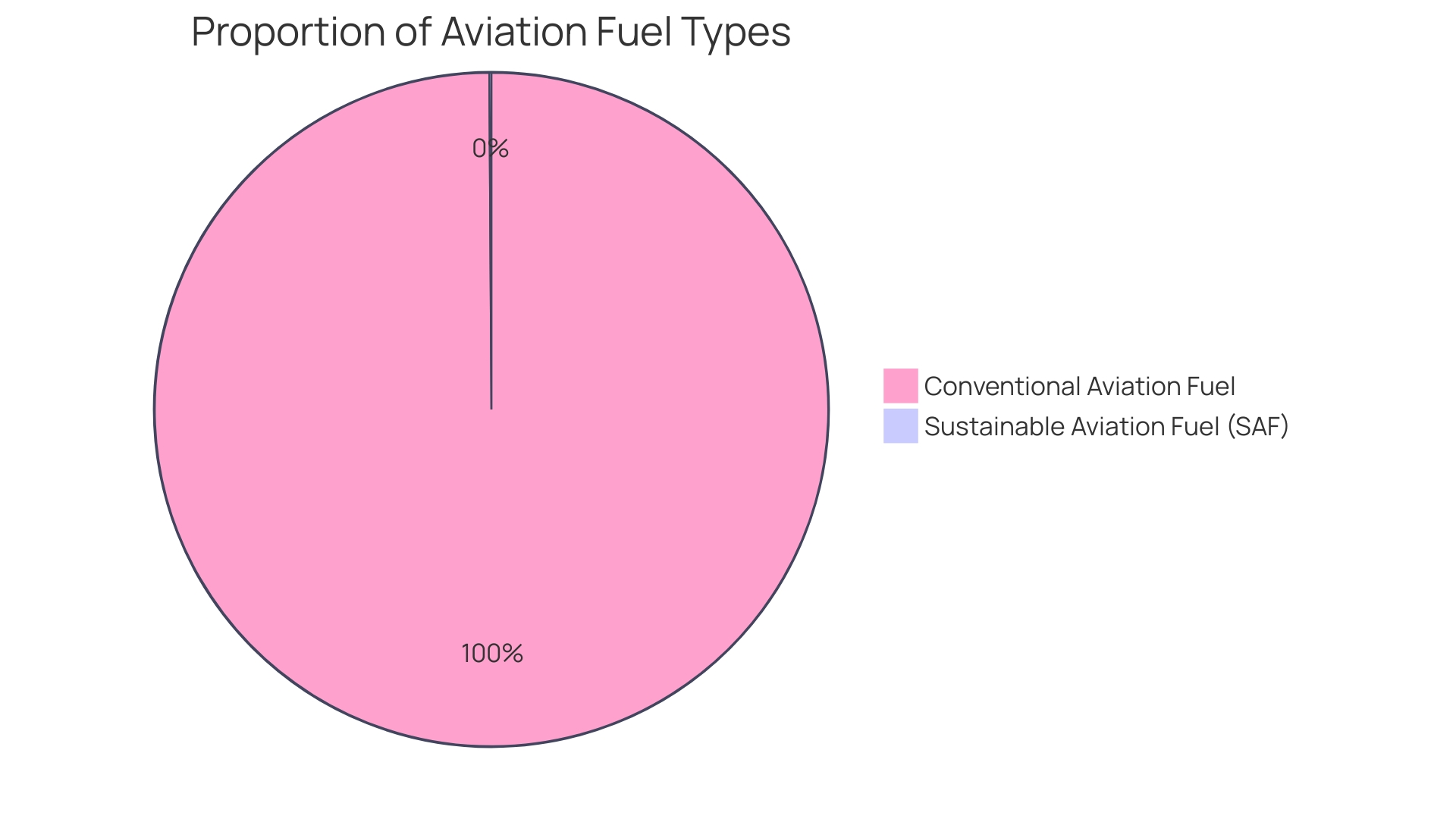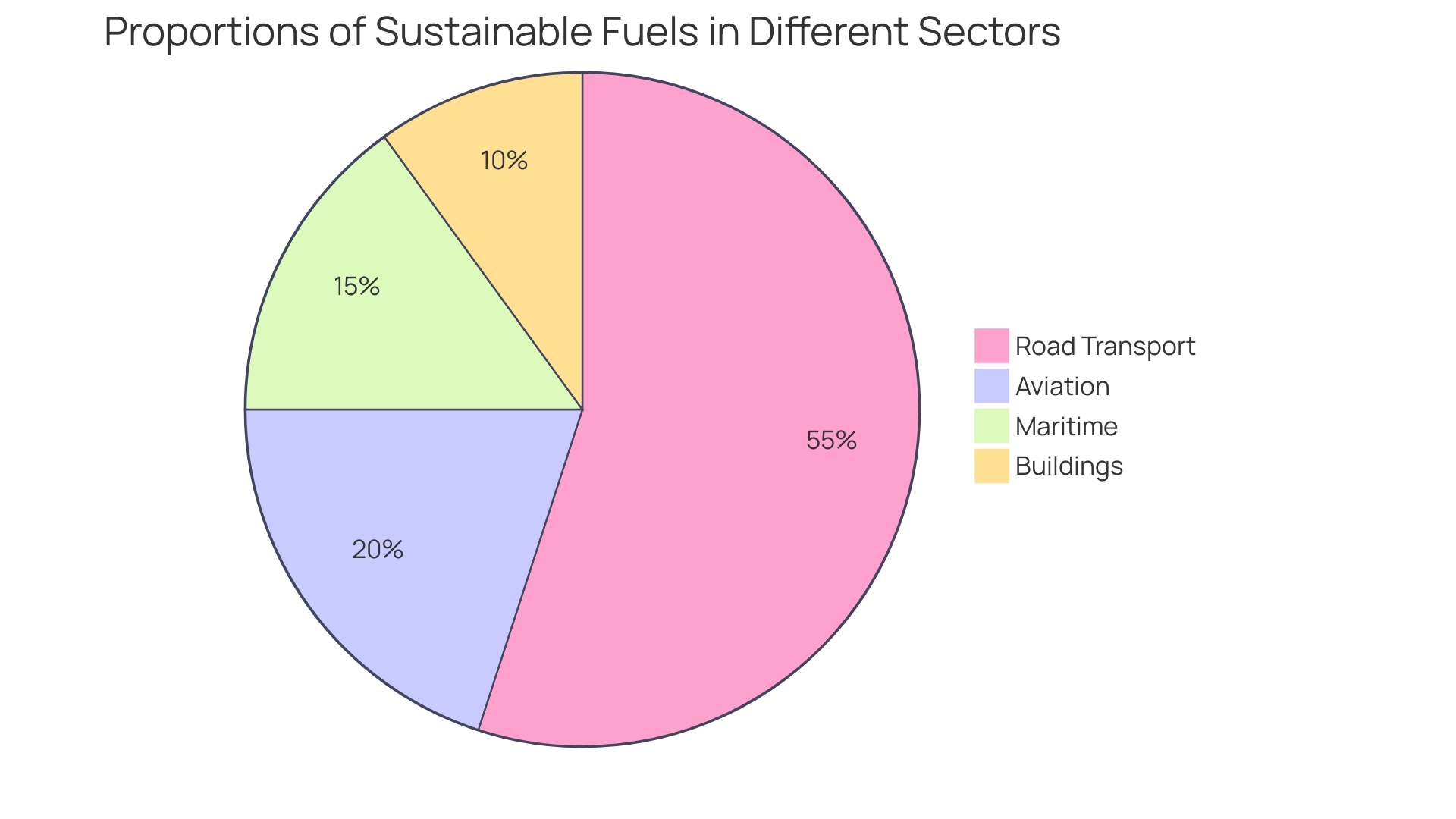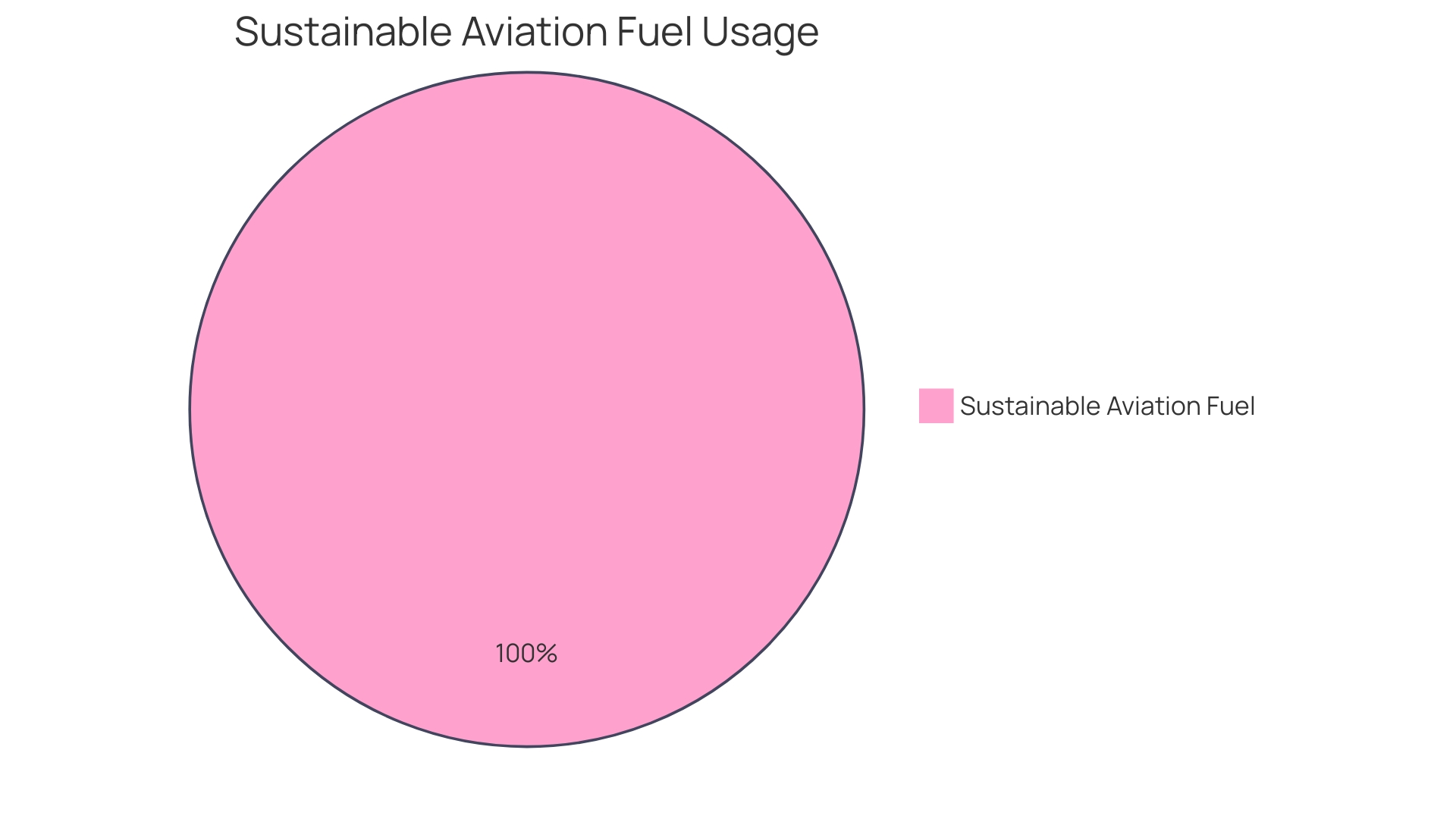Introduction
Sustainable Aviation Fuel (SAF) is revolutionizing the aviation industry's approach to environmental sustainability. Derived from renewable resources such as used cooking oils and agricultural residues, SAF offers a significant reduction in carbon emissions compared to traditional jet fuel. Despite its immense potential, SAF currently powers only 0.1% of flights, highlighting the need for accelerated adoption.
This article explores the technical requirements, production pathways, safety standards, and policy frameworks surrounding SAF, as well as the challenges and next steps for its widespread use. By understanding these key aspects, the aviation sector can pave the way for a greener future and ensure the continued growth of global connectivity.
What is Sustainable Aviation Fuel?
Sustainable Aviation Fuel (SAF) stands as a beacon of progress in the aviation industry's quest for environmental stewardship. Unlike conventional fossil-based jet fuels, SAF is derived from various renewable resources, including used cooking oils, agricultural residues, and non-fossil CO2. The integration of SAF into the fuel supply chain signifies a pivotal shift toward diminishing the aviation sector's carbon footprint and embracing a more ecologically responsible mode of air travel.
SAF's importance is underscored by its potential to drastically cut down emissions. While the current usage of SAF is limited, with only about 0.1% of all flights utilizing it, its adoption holds the promise of significant environmental benefits. Notably, the carbon reduction potential of SAF is considerable, with lifecycle greenhouse gas emissions potentially reduced by up to 80% compared to traditional jet fuel.
The industry-wide move towards SAF is exemplified by Virgin Atlantic's recent milestone flight, powered in part by this innovative fuel, marking a significant step in the journey towards net-zero carbon emissions. The airline, renowned for its commitment to innovation and customer service, represents the broader aviation community's dedication to sustainable practices.
Moreover, the collaborative efforts of entities like Airbus and Neste are setting the stage for a low-carbon future in aviation. Their partnership showcases the potential of joint endeavors in achieving substantial reductions in aviation's carbon emissions, thereby fostering a healthier planet for future generations.
In terms of policy and research, there is a growing recognition of the need for robust reporting methodologies to monitor progress. The EU's commitment to engaging with the International Civil Aviation Organization (ICAO) on the implementation of SAF reflects a global leadership role in this transformative journey.
The sustainable trajectory of aviation, powered by SAF, is not just a mere aspiration but a necessary evolution. As the industry grapples with the impacts of climate change, the adoption of SAF becomes a critical component in the strategy to ensure both the health of our planet and the continued growth of global connectivity.

How SAF Fits into the Aviation Decarbonisation Plan
Sustainable Aviation Fuel (SAF) is at the forefront of the aviation industry's mission to combat climate change and reduce its carbon footprint. As air travel demand soars, the urgency for eco-friendly alternatives escalates. SAF emerges as a promising solution, capable of slashing greenhouse gas emissions by over 80%, thus offering a substantial reduction in the carbon intensity of aviation fuels.
Embracing SAF is more than an environmental imperative; it's an active stride towards the industry's ambitious sustainability targets. Despite these benefits, Saf's current usage is a mere fraction of global aviation fuel consumption, constrained by limited supply, fragmented demand, and economic hurdles. This scenario underscores the necessity for a paradigm shift, one that accelerates SAF adoption through enhanced production and favorable policy frameworks, propelling the aviation sector towards its net-zero aspirations.

Types of SAF: Feedstocks and Production Pathways
Sustainable Aviation Fuel (SAF) is at the forefront of the aviation industry's efforts to achieve net-zero carbon emissions. With the milestone transatlantic flight powered by SAF, made primarily from tallow and waste fats, the industry showcased its commitment to environmental stewardship. The flight, funded partly by the UK government, is a testament to the potential of SAF as a viable alternative to conventional jet fuel.
SAF is produced through various pathways, notably the Hydroprocessed Esters and Fatty Acids (HEFA) and Fischer-Tropsch (FT) processes, utilizing renewable resources such as biomass, waste oils, and agricultural residues. The versatility of these feedstocks and processes underscores the adaptability and innovation within the SAF sector.
Despite its promise, Saf's current market penetration is just 0.1% of total flights, indicating the scale-up challenges ahead. The aviation sector, including leading airlines like Delta, is actively pursuing the integration of SAF into their operations, targeting significant reductions in fossil fuel usage in the coming years.
Education plays a crucial role in increasing SAF adoption. As seen in academic settings, such as Waubonsee's biology class, students from diverse fields are engaging with SAF technology and its environmental benefits. This educational approach is vital for fostering a well-informed public that supports sustainable travel.
While the path to widespread SAF utilization is laden with hurdles like cost and supply, the collective efforts of industry partners, educational institutions, and supportive policies are integral to realizing the vision of a greener aviation future.
Technical Requirements and Testing for SAF
Ensuring the production and utilization of Sustainable Aviation Fuel (SAF) adheres to stringent technical standards is critical for maintaining the safety and efficacy of modern aviation. These standards are not just theoretical but are the product of comprehensive testing methodologies, including laboratory analysis, ground trials, and in-flight assessments. Such rigorous testing protocols are essential to confirm that SAF is fully compatible with current aircraft models and the broader aviation infrastructure.
The importance of these measures is underscored by the aviation industry's commitment to a net-zero carbon emissions future, as demonstrated by pioneering efforts such as Virgin Atlantic's historic flight using 100% SAF. This milestone underscores the viability of SAF and the aviation industry's potential to innovate towards sustainable practices. As SAF continues to become a focal point for emissions reduction, understanding and complying with the industry's technical and safety standards is paramount for any company operating in this space.
Moreover, insights from other high-risk industries, like the California utilities' approach to wildfire prevention, reveal the complexities and the necessity of balancing safety standards with economic and reputational considerations. The development of SAF is paralleled by the need for robust monitoring and reporting methodologies, akin to the transparency and cooperation seen in the agreement among EU Member States and the Commission to lead global efforts in aviation sustainability.
With only 0.1% of flights currently powered by SAF, there is a significant opportunity for growth in this sector. However, this expansion must be managed responsibly, ensuring biomass production for SAF is sustainable and feedstocks are strategically located to minimize transport and infrastructure costs. The aviation industry must also pay close attention to the diverse feedstocks, ensuring their collection and processing add value while contributing to the overarching goal of decarbonization.
Ultimately, navigating the technical landscape of SAF production and usage is not only about meeting existing standards but also about actively contributing to the industry's sustainable evolution. It's about integrating the lessons from other sectors, understanding the nuances of biomass production, and upholding the safety and performance standards that will enable the aviation industry to reach its ambitious net-zero targets.
Ensuring SAF is Fit to Fly: Safety and Performance Standards
The aviation industry's commitment to safety is unparalleled, with every aspect of flight meticulously regulated to ensure the highest standards. Sustainable Aviation Fuel (SAF) is no exception; it must pass rigorous safety and performance tests before it can power aircraft. These evaluations focus on critical factors such as the fuel's composition, its stability at various temperatures, and its compatibility with existing aircraft engine technology.
The importance of these standards cannot be overstated - they are the bedrock of trust in SAF's ability to support safe and dependable flights.
A safety culture is deeply ingrained within aviation, underlined by a shared belief system among organizational members, which significantly influences safety management systems. This culture is vital for the successful integration of SAF into the aviation fuel landscape. As the industry strives to balance environmental objectives with operational demands, the role of human factors becomes increasingly important.
Studies demonstrate that human performance issues contribute to the majority of aviation incidents, which underscores the need for comprehensive training and adherence to safety protocols in the handling and use of SAF.
Despite SAF's potential to revolutionize the industry with its reduced carbon footprint, it currently powers a mere 0.1% of flights. This stark statistic reflects the significant challenges that lie ahead in scaling up production and usage. The industry's growth trajectory suggests that emissions will continue to rise, making the transition to SAF an urgent priority.
Saf's ability to integrate seamlessly with existing aircraft without the need for new infrastructure gives it an edge over other green technologies and positions it as a promising solution for reducing aviation's carbon emissions.
The successful adoption of SAF hinges not only on meeting stringent technical requirements but also on fostering a culture of safety that aligns with the industry’s long-standing values. As we look to a future where aviation's environmental impact is minimized, the rigorous standards governing SAF will be instrumental in ensuring the transition is both safe and effective.
Challenges and Next Steps for SAF Adoption
Sustainable Aviation Fuel (SAF) is at the forefront of the aviation industry's efforts to achieve carbon-neutral status by 2050. Despite Saf's potential to replace current transportation fuels without adding more planet-warming gases to the atmosphere, its adoption is limited, with only 0.1% of flights currently powered by it. The challenges hindering its widespread adoption are multifaceted, including the availability of feedstocks, scalability of production, achieving cost competitiveness, and navigating complex regulatory frameworks.
According to the World Economic Forum, the aviation sector is the third-largest source of transportation emissions in the United States, contributing to around 7% of the total emissions from the sector. With air travel and freight demands on the rise, emissions are expected to increase, underscoring the urgency for scalable SAF solutions. However, the production of SAF at the scale required to meet global demand poses significant challenges.
Commercial aircraft operate for 20 to 30 years on average, which means that relying solely on aircraft design improvements or electrification would not suffice for timely decarbonization.
The aviation industry acknowledges the gravity of these challenges. For instance, at the World Aviation Festival in Lisbon, industry executives expressed a sobering view on achieving the 2050 carbon-neutral goals. The scarcity and high cost of SAF, along with the extensive land and natural resources needed for its production, pose considerable barriers.
Additionally, the financial burden of transitioning to SAF is likely to be passed on to travelers, given the industry's slim profit margins.
Despite these obstacles, progress is being made. Prime Movers Lab's new blog series on sustainable fuel technologies highlights innovative startups striving to make SAF economically viable and energy-efficient. As stated by an industry expert, the successful flight powered by SAF represents a significant milestone in the aviation industry's journey towards net-zero emissions.
Collaborative efforts among industry stakeholders, governments, and research institutions are crucial for overcoming these challenges and establishing a sustainable SAF supply chain.

Policy Frameworks and Support for SAF Production
Policy frameworks and support mechanisms established by governments and international organizations are pivotal in advancing the production and uptake of Sustainable Aviation Fuel (SAF). Incentives, such as tax breaks and grants, alongside mandates and substantial research funding, propel SAF development by fostering a conducive investment climate. This strategic encouragement expedites the aviation industry's shift towards sustainability, aligning with global climate objectives.
An example of such policy action is the ReFuelEU Aviation initiative, which is part of the EU's 'Fit for 55' package aimed at reducing greenhouse gas emissions by at least 55% by 2030 from 1990 levels. The provisional political agreement on this initiative underscores the EU's commitment to a carbon-neutral future by enforcing a level playing field for sustainable air transport from January 2024.
Discussions at international forums highlight the variance in global strategies to escalate SAF production, with the EU favoring mandates, the US providing incentives, and Japan utilizing a hybrid approach. Incentives are generally recognized as essential for spurring innovation essential for increasing production capacities and exploring new SAF pathways, such as alcohol-to-jet fuel.
Stakeholder reports from Europe, the US, and the Middle East emphasize the necessity for collaboration between the aviation and energy sectors, as well as public entities, to establish a more supportive environment for SAF scaling. This collaborative mindset is instrumental for the aviation industry to reach net-zero carbon emissions, a goal significantly underscored by the milestone flight powered by SAF.
Moreover, the burgeoning SAF market in regions like the Great Lakes and the Rocky Mountains presents an opportunity for industry stakeholders to engage in the evolution of a cleaner aviation sector. The US aviation sector, being the third-largest source of transportation emissions and expected to grow, underlines the urgency for SAF deployment. With the longevity of commercial aircraft and the limitations of electrification for long-haul flights, SAF emerges as the most feasible avenue for mid-century decarbonization of aviation.

Market Penetration and Barriers to SAF Use
The ascent of sustainable aviation fuel (SAF) is crucial for reducing the carbon footprint of the aviation industry, which accounts for approximately 7% of US transportation emissions. The technology to produce SAF exists; however, achieving significant market penetration faces three primary barriers: the higher cost of SAF compared to conventional jet fuel, limited production capacity, and the need for infrastructure modifications.
Cost is a pivotal factor, as SAF must be competitive with conventional jet fuel to become a viable option. Currently, only 0.1% of flights are powered by SAF, underlining the challenge of large-volume carrying capacity needed for long-haul flights. To address the cost barrier, continued investments in research and development are essential to enhance the energy efficiency and cost-effectiveness of SAF production.
On the production front, the industry must scale up to meet the growing demand. This involves not only increasing the number of facilities capable of producing SAF but also the strategic growth of feedstocks in areas that can support efficient grouping of processing facilities. This could help mitigate transportation and infrastructure costs associated with the production of SAF.
Infrastructure modifications are also required to accommodate the use of SAF. The aviation industry, known for its safety culture and infrastructure, will need to adapt to integrate SAF into its fuel supply chain effectively. Collaborating with stakeholders, including airlines, fuel suppliers, and policymakers, is critical to building a robust SAF market.
Incentivizing the use of SAF through policies and regulations can catalyze industry transformation. For instance, collaborations like the one between Air France-KLM, Delta Air Lines, and Virgin Atlantic demonstrate the aviation industry's commitment to creating a more sustainable future. Virgin Atlantic's journey towards net zero carbon emissions highlights the industry's potential to innovate and align with global climate goals.
In conclusion, surmounting these barriers requires a multi-faceted approach that includes technological innovation, economic incentives, and collaborative efforts across the aviation industry. By tackling these challenges, we can pave the way for SAF to become a key player in aviation's sustainable future.

Best Practices for High-Integrity SAF and Avoiding Double Counting
The quest for a greener sky is intensifying, with Sustainable Aviation Fuel (SAF) at the forefront of transforming the aviation industry. As SAF gains momentum, it is imperative to ensure the integrity of its production and usage to uphold its environmental contributions. Integral to this process are robust certification and traceability systems that verify the sustainability criteria of SAF production.
These systems not only prevent the double counting of emission reductions but also provide much-needed transparency to all stakeholders involved.
To exemplify the significance of meticulous monitoring and reporting, consider the approach of Salesforce in assessing supplier commitments to science-based targets. Annually, Salesforce's progress is meticulously evaluated by a third party and detailed in its Stakeholder Impact Report. Similarly, the Aquatic Life Institute's 'Four R's for Formative Change' campaign stresses the importance of sustainable practices and certifications in supply chain management.
The production and adoption of SAF are not without challenges. Despite its potential to slash carbon intensity by over 80%, SAF currently fuels less than 0.1% of global aviation flights. The obstacles are multifaceted: an insufficient supply, a fragmented demand, and high costs are formidable barriers.
Furthermore, the non-CO2 effects of aviation, such as contrail cirrus formations, add another layer of complexity to the industry's environmental impact.
As we navigate this pivotal era in aviation, it is crucial for stakeholders to pull together, leveraging policy and financial levers to foster an environment conducive to scaling SAF. The journey towards sustainable aviation is a collaborative effort, and with strategic planning and commitment, we can ensure the credibility and growth of the SAF market.
Conclusion
Sustainable Aviation Fuel (SAF) offers a significant reduction in carbon emissions compared to traditional jet fuel, but its current adoption rate of only 0.1% highlights the need for accelerated use. Challenges hindering SAF adoption include limited supply, fragmented demand, and economic hurdles. To overcome these challenges, a paradigm shift is needed, accelerating SAF adoption through enhanced production and favorable policy frameworks.
Collaboration among industry partners, educational institutions, and supportive policies is vital for increasing SAF adoption and realizing a greener aviation future.
Ensuring the safety and efficacy of SAF is critical, requiring adherence to stringent technical standards and comprehensive testing methodologies. Policy frameworks and support mechanisms established by governments and international organizations play a pivotal role in advancing SAF production. Incentives, mandates, and research funding foster a conducive investment climate.
Collaboration between the aviation and energy sectors, along with public entities, is necessary for creating a supportive environment for SAF scaling.
Barriers to SAF use include cost competitiveness, limited production capacity, and infrastructure modifications. Continued investments in research and development are essential to enhance energy efficiency and cost-effectiveness. Collaboration among stakeholders and incentivizing SAF use through policies and regulations can drive industry transformation.
In conclusion, accelerating SAF adoption is crucial for the aviation industry's environmental sustainability goals. By addressing challenges, fostering collaboration, upholding stringent standards, and leveraging policy and financial levers, the industry can pave the way for a greener future in aviation.




